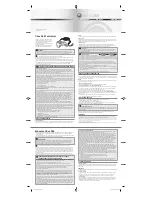
2-1
2
Installation Preparation
Safety Precautions
To avoid any device impairment and bodily injury caused by improper use, observe these rules:
z
Pull the power plug(s) out of the AC before cleaning the AC. Do not clean the AC using wet cloth or
liquid.
z
Keep the AC away from water or dampness. Prevent water or moisture from entering the AC
chassis.
z
Do not place the AC on an unstable case or desk. The switch might be damaged severely in case
of a fall.
z
Ensure proper ventilation in the equipment room and keep the vents of the AC free of obstruction.
z
Make sure that the operating voltage is within the range labeled on the AC.
z
Do not open the chassis when the AC is operating or when electrical hazards are present to avoid
electrical shocks.
z
When replacing interface cards, wear ESD-preventive gloves to avoid damaging the cards.
Installation Site Checking
The WX5002 AC must be used indoors. You can mount a AC in a cabinet or on a workbench, but make
sure that:
z
Adequate clearances are reserved at the air inlet/exhaust vents for heat dissipation.
z
The cabinet or workbench has a good ventilation system.
z
The cabinet is sturdy enough to support the AC and its accessories.
z
The cabinet or workbench is well earthed.
To ensure normal operation and a long service life of your AC, install it in an environment that meets the
requirements described in the following subsections.
Requirements on Temperature/Humidity
You must maintain a proper temperature and humidity in the equipment room. A long term of high
humidity may lead to bad insulation, electricity leakage, mechanical property changes, and corrosion.
However, if the relative humidity is too low, captive screws may become loose as a result of contraction
of insulation washers and static electricity may be produced in a dry environment to jeopardize the
circuits on the device. A high temperature is the most undesirable condition, because it accelerates the
aging of insulation materials and thus significantly lowers the reliability and service life of the AC.
Requirements on Cleanness
Dust is a hazard to the operating safety of the AC. The dust accumulated on the chassis can be
adsorbed by static electricity and result in poor contact of metal connectors or metal contact points.
Especially, when the relative indoor humidity is low, electrostatic adsorption is more likely to happen.
This can not only shorten the service life of the AC but also cause communications failures. The
following table lists the dust concentration limit.














































